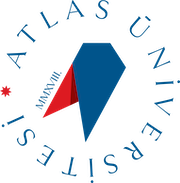| Week |
Subject |
Related Preparation |
| 1) |
Functions and Their Graphs (domain and range, graph of a function, even functions and odd functions, symmetry, common functions), Combining Functions to Make New Functions (sums, differences, product and quotients, composite functions, shifting a graph of a function, scaling and reflecting), The Trigonometric Functions.
|
Textbook Chapter 1
|
| 2) |
Limit of A Function and Limit Laws (Limits of Function Values, The Limit Laws, the sandwich theorem), The Precise Definition of A Limit, One-Sided Limits, Limits Involving Infinity (finite limits involving infinity, infinite limits).
|
Textbook Chapter 2
|
| 3) |
Continuity (continuity at a point, continuous functions, intermediate value theorem, asymptotes of graphs), Tangent Lines (Derivative At A Point), Derivatives (differentiable on an interval, one-sided derivatives).
|
Textbook Chapter 2, Chapter 3
|
| 4) |
Differentiation Rules (powers, multiples, sums and differences, products and quotients, higher-order derivatives), Derivatives of Trigonometric Functions, The Chain Rule (derivative of a composite function).
|
Textbook Chapter 3
|
| 5) |
Implicit Differentiation. Linearization and Differentials.
|
Textbook Chapter 3
|
| 6) |
Inverse Functions and Their Derivatives, Natural Logarithms, Exponential Functions, Inverse Trigonometric Functions, Hyperbolic Functions. Indeterminate Forms and L'Hospital Rule.
|
Textbook Chapter 7
|
| 7) |
Extreme values of Functions on Closed Intervals (local extreme values, finding extrama). Rolle Theorem, The Mean Value Theorem.
|
Textbook Chapter 4
|
| 8) |
Midterm exam |
Textbook and lecture notes |
| 9) |
Monotonic Functions and The First Derivative Test (increasing functions and decreasing functions), Concavity and Curve Sketching (concavity, points of inflection, second derivative test for local extrema). Anti Derivatives (antiderivatives, initial value problems, indefinite integrals).
|
Textbook Chapter 4
|
| 10) |
Area and Estimating with Finite Sums, Sigma Notation and Limits of Finite Sums, Rieman Sums, The Definite Integral, Area Under the Graph of a Nonnegative Function, Average Value of a Continuos Function.
|
Textbook Chapter 5
|
| 11) |
The Fundamental Theorem of Calculus, Indefinite Integrals and The Substitution Method, Definite Integral Substitutions. Area Between Curves.
|
Textbook Chapter 5
|
| 12) |
Using Basic Integration Formulas, Integration by Parts, Trigonometric Integrals, Trigonometric Substitutions.
|
Textbook Chapter 8
|
| 13) |
Using Basic Integration Formulas, Integration by Parts, Trigonometric Integrals, Trigonometric Substitutions.
|
Textbook Chapter 8
|
| 14) |
Integration of Rational Functions by Partial Fractions, Integral Tables.
|
Textbook Chapter 6
|
| 15) |
Review. Volumes Using Cross Sections, Volumes Using Cylindrical Shells, Arc Length, Areas of Surfaces of Revolution
|
Textbook Chapter 6
|
| 16) |
Final |
Textbook and Lecturer Notes |
| |
Program Outcomes |
Level of Contribution |
| 1) |
Adequate knowledge of mathematics (a), science (b) and industrial engineering (c) (1) and the ability to use this knowledge in complex engineering problems. |
|
| 2) |
Ability to work effectively both individually and in interdisciplinary and multidisciplinary teams. |
|
| 3) |
Awareness of the necessity of lifelong learning and the ability to access information, to follow developments in science and technology, and to constantly renew oneself. |
|
| 4) |
Knowledge of project management, risk management, innovation and change management, entrepreneurship and sustainable development |
|
| 5) |
Awareness of the sectors and the ability to prepare a business plan. |
|
| 6) |
Professional and ethical responsibility awareness and acting in accordance with ethical principles. |
|
| 7) |
Information about the problems of the age in the field of engineering and the effects and legal consequences of engineering practices on health, environment and safety in universal and social dimensions. |
|
| 8) |
Information about current engineering practices and standards used in engineering practices. |
|
| 9) |
The ability to identify, formulate and solve complex engineering problems, and the ability to select and apply appropriate analysis and modeling methods for this purpose. |
|
| 10) |
The ability to design a complex system, process, device or product using modern methods under realistic constraints and conditions and to meet specific requirements. |
5 |
| 11) |
The ability to develop, select and use modern techniques and tools necessary for the solution of engineering problems, and the ability to use information technologies effectively. |
|
| 12) |
Ability to design and conduct experiments, collect data, analyze data and interpret results for the study of engineering problems or research issues. |
4 |
| 13) |
Ability to communicate effectively, write reports and make presentations in Turkish and English with oral, written and visual methods. |
|
| 14) |
In-depth knowledge of appropriate analytical and experimental methods and computational methods for system integration such as simulation (a), production systems (b) operations research (c) and statistics (d). |
|
| 15) |
Skills in designing (a) and improving (b), defining goals and criteria (c), analyzing (d) and developing solutions (e) systems that include people, materials, information, equipment and energy to creatively solve real-life problems |
3 |
 BİLGİ PAKETİ / DERS KATALOĞU
BİLGİ PAKETİ / DERS KATALOĞU
